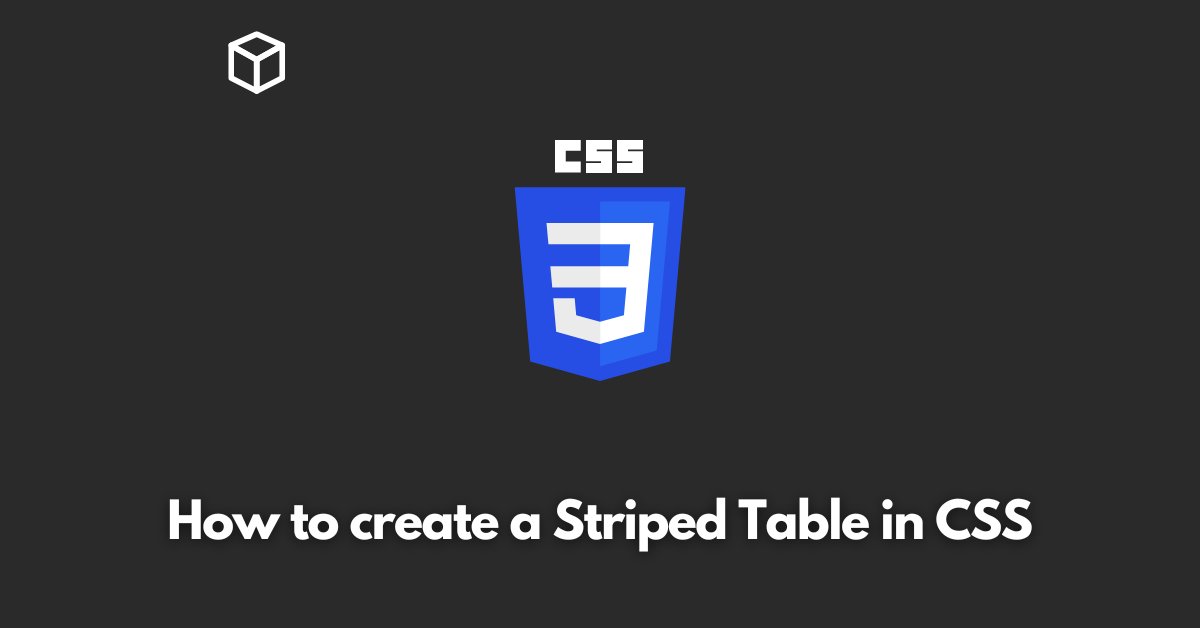Creating a striped table in CSS is a great way to add visual interest to your website or web application.
This tutorial will show you how to create a striped table using CSS, with code examples that you can use to implement the technique on your own website.
Step 1: Create a Table
The first step in creating a striped table is to create the table itself.
This can be done using HTML, which is the markup language used to create the structure of web pages.
You can use the <table> element to create the table, and the <tr> and <td> elements to create the rows and cells within the table.
Here’s an example of a simple table with two rows and two columns:
<table>
<tr>
<td>Row 1, Column 1</td>
<td>Row 1, Column 2</td>
</tr>
<tr>
<td>Row 2, Column 1</td>
<td>Row 2, Column 2</td>
</tr>
</table>Step 2: Add CSS to Style the Table
The next step is to add CSS to style the table. This is where you can create the striped effect by applying a background color to every other row.
To do this, you can use the :nth-child pseudo-class to select every other row, and then apply a background color to those rows using the background-color property.
Here’s an example of CSS that creates a striped table with a light gray background color for every other row:
table {
width: 100%; /* Make the table take up the full width of its container */
}
tr:nth-child(even) {
background-color: #f2f2f2; /* Light gray background color for every other row */
}Step 3: Test and Tweak
Finally, you can test the table in your web browser to see how it looks and make any necessary adjustments.
For example, you may want to adjust the background color or font size of the table cells, or add a border to the table.
Here is an example of how the table looks with the CSS style applied.
<!DOCTYPE html>
<html>
<head>
<style>
table {
width: 100%; /* Make the table take up the full width of its container */
}
tr:nth-child(even) {
background-color: #f2f2f2; /* Light gray background color for every other row */
}
</style>
</head>
<body>
<table>
<tr>
<td>Row 1, Column 1</td>
<td>Row 1, Column 2</td>
</tr>
<tr>
<td>Row 2, Column 1</td>
<td>Row 2, Column 2</td>
</tr>
<tr>
<td>Row 3, Column 1</td>
<td>Row 3, Column 2</td>
</tr>
<tr>
<td>Row 4, Column 1</td>
<td>Row 4, Column 2</td>
</tr>
<tr>
<td>Row 5, Column 1</td>
<td>Row 5, Column 2</td>
</tr>
</table>
</body>
</html>With these simple steps, you can create a visually appealing striped table using CSS.
This technique can be used to add some extra flair to your website or web application, and it’s a great way to make your tables easier to read and navigate.
As a bonus, you can even customize the table to your own design by adjusting the CSS styles to fit your design needs.




